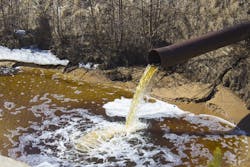The Oregon Department of Environmental Quality revised the Port of Morrow’s groundwater contamination fine to $2.1 million.
This decision was prompted after the discovery of additional wastewater violations.
According to the Oregon DEQ, reported OPB, the agency added $800,000 to the Port’s original $1.3 million fine for over-applying nitrogen-rich wastewater on agricultural fields in the Lower Umatilla Basin. The DEQ adds that this basin is the primary drinking water source for Morrow and Umatilla counties, reported OPB.
“When we issued the original penalty in January, we knew that there would be additional violations coming,” said DEQ spokesperson Laura Gleim, reported OPB. “We just didn’t yet have the documentation for those, and we didn’t want to wait several more months before issuing the original penalty and start moving towards getting them into compliance.”
The Port violated its water quality permit an additional 626 times between November 2020 to February 2022, with a total of 2,155 violations overall.
Additionally, the Port added 96 additional tons of excess nitrate to nearby agricultural fields, an estimated 261 tons total, during that time, reported OPB.
“By the DEQ’s own analysis, the Port’s industrial wastewater reuse program is responsible for less than 5% of the area’s nitrates,” said Lisa Mittelsdorf, the Port’s executive director, in an emailed statement, reported OPB. “We will continue to work with DEQ to collaborate on a solution that will address what happens to industrial wastewater during winter months without shutting down the industries generating that wastewater.”
Morrow County declared a local state of emergency after private well testing showed high levels of nitrate contamination. The results after testing approximately 70 wells showed high concentrations of the contaminant.
Morrow County Commissioner Chair Jim Doherty has been working with local organization Oregon Rural Action to test private wells for nitrate contamination. According to OPB, there are no Oregon regulations on private wells, so owners are responsible for those wells.
Five pollution sources are: irrigated agriculture; food processing wastewater; animal feeding operations like dairies and feedlots; sewage from septic tank systems; and the U.S. Army Umatilla Chemical Depot’s bomb washout lagoons.
According to DEQ, fertilizer used on irrigated farmland accounts for approximately 70% of nitrates leaching into the groundwater, and concentrated animal feeding operations account for about 12%.


